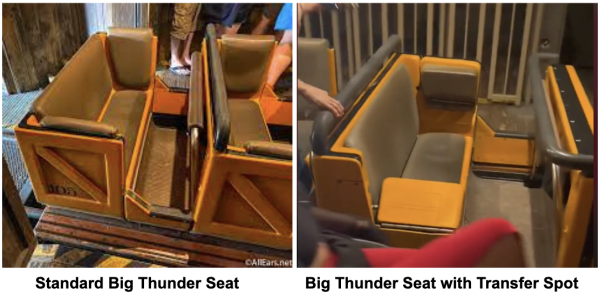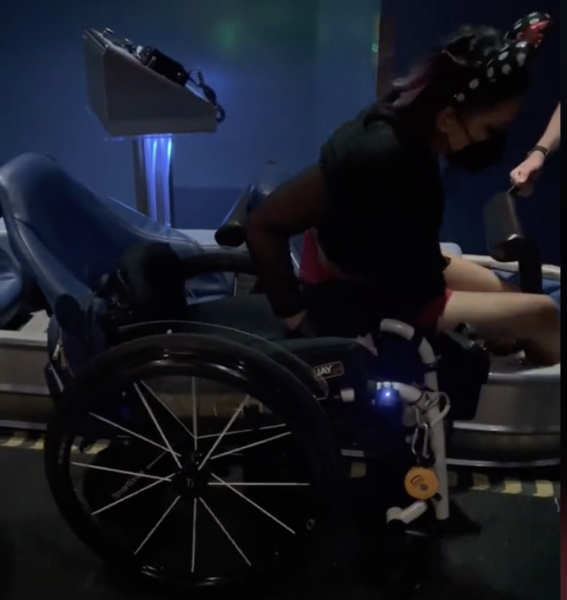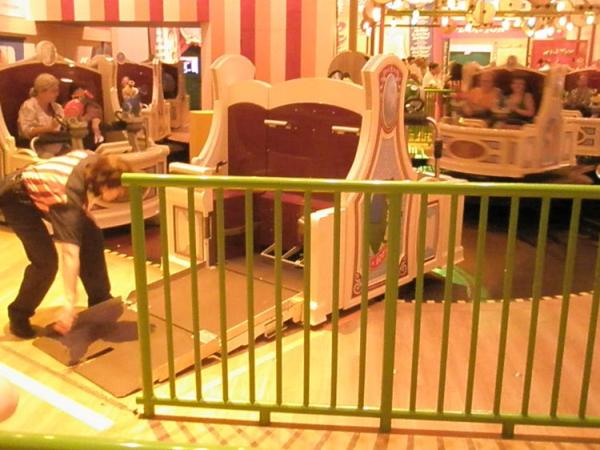
By: Sakeena Siddiq
Summer is a time of rest, relaxation, and fun with friends -- what could be better than spending it at the Happiest Place on Earth? Indeed, summer break is one of the busiest times in Southern California at Disneyland and its neighbor amusement park, Universal Studios. Let’s take a look at how these parks include their disabled attendees.
Both parks have disability access passes: at Disney, it’s the Disability Access Service (DAS), and at Universal Studios, it’s the Attractions Assistance Pass (AAP). Users of the passes have mentioned how the process to acquire them is smooth and the passes are helpful. They also do not require doctor’s notes or official paperwork. However, experiences with how much explanation is required to cast members varies greatly. People have stated that some just claim they need it and are given it with no questions asked, while other guests have said that they must instead explain their needs to guest services, such as difficulties waiting in line or with temperature control.
At Universal Studios, one of the main routes of transportation between the Upper and Lower Lots is the famous escalator, sometimes called its own attraction. This is obviously not accessible to people with mobility impairments, so the AAP gives the option of using a nearby elevator instead. The passes are great for their inclusivity of both physical and cognitive disabilities. Disabled kids and adults are able to enjoy the fun of the parks, which can help them embrace and feel comfortable in their disabled identities. Disabilities are acknowledged and respected through these programs.
However, because of the nature of the pass, that it allows people who need it to avoid lines and does not require official paperwork, it has unfortunately been abused. In 2013, the New York Post reported a scandal that “Rich Manhattan Moms” were hiring disabled people by the hour to pose as family members. As everyone at Disneyland is dressing up as their favorite movie series or character, there is another imposter among us! It’s no secret that wealth can buy many shortcuts in life. Knowing this, it seems there is an issue with people perceiving disability passes as “shortcuts” that they can purchase, rather than a service for people who need it. Amusement parks can be transformative spaces for children with disabilities, helping them feel accepted and acknowledged. The passes are designed to include everyone in the fun of the parks. Why do able bodied people feel so entitled to take advantage of these services? Changing this culture of entitlement starts with us. Next time we visit the parks, if someone encourages you to participate in one of these abuses, make it clear that it’s not okay to do.
There are also aspects of the pass and disability services at these parks that do require more thought and invention to improve accessibility. Engineering of ride vehicles varies between the different rides. Some are designed for people to stay on their wheelchairs and some require transfer out of a wheelchair. Some vehicles, particularly older vehicles, have entryways that are too narrow for people to slide onto. Some ride vehicles such as Space Mountain have special mechanisms to allow riders with disabilities more time to load and unload. Other rides have small but extremely impactful modifications. Big Thunder Mountain Railroad has a seat where the wall folds down to become a transfer bench for wheelchair users. More modern rides, like Toy Story Mania, are built for a single wheelchair user and one able bodied companion. When there are couples or groups of friends of wheelchair users, they are not able to go on the same vehicle with the people they came with. To improve this, parks can create larger vehicles that can accommodate two or more wheelchairs so groups can stay together. There are levels of accessibility, and there is no one-size-fits-all model of the amusement park access pass. Disability accessibility and accommodations will always be an ongoing task and hopefully constantly improving as we better learn to help a wider range of guest needs. Next time you visit a park, take some time to notice the levels of access; think about what could be improved or what’s working well. Ask your disabled friends as well
Let’s make the happiest places on Earth happy for all attendees!
Originally Posted: 22 August 2023



(Can fit one wheelchair user and an accompanying ambulatory guest)
Picture References:
Big Thunder Mountain Railroad and Space Mountain Wheelchair Transfer Screenshots from TikToker @chronically_summer
Toy Story Mania picture from DISboards.com

